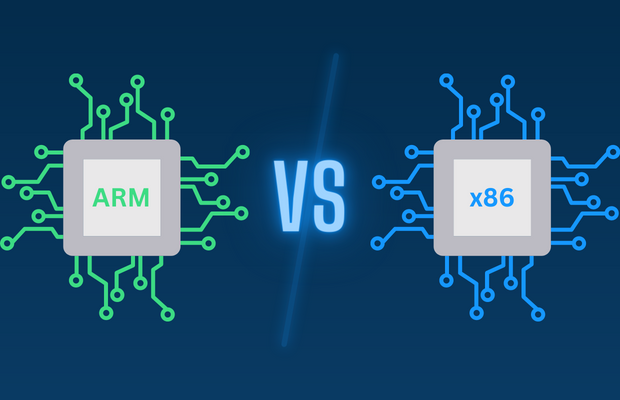ARM64 vs. x86 Architecture: Contrasts and Considerations
 Cloud Tuned
Cloud Tuned
ARM64 vs. x86 Architecture: Contrasts and Considerations
ARM64 and x86 are two prominent instruction set architectures that power a vast array of computing devices. While both architectures offer high performance and versatility, they differ in their design, applications, and performance characteristics. In this section, we'll compare ARM64 and x86 architectures, highlighting their differences and considerations for various computing environments.
ARM64 Architecture
ARM64 architecture, developed by ARM Holdings, is known for its energy efficiency, scalability, and widespread adoption in mobile, embedded, and server environments. Key features of ARM64 architecture include:
Energy Efficiency: ARM64 processors are designed for low power consumption, making them ideal for battery-powered devices and energy-efficient data centers.
Scalability: ARM64 architecture offers scalability from low-power embedded systems to high-performance servers, providing flexibility for a wide range of applications.
Customization: ARM64-based processors can be customized and optimized for specific use cases, allowing for tailored solutions and improved performance in targeted applications.
x86 Architecture
x86 architecture, originally developed by Intel and AMD, has long been the dominant architecture for desktop, laptop, and server computing. Key features of x86 architecture include:
Legacy Compatibility: x86 architecture has extensive legacy compatibility, supporting a wide range of software and hardware devices developed for the platform over several decades.
Performance: x86 processors are known for their high performance and robust computing capabilities, making them well-suited for demanding workloads in desktop and server environments.
Market Dominance: x86 architecture has a significant market share in desktop, laptop, and server computing, with a vast ecosystem of software and hardware vendors supporting the platform.
Comparison
Energy Efficiency:
- ARM64: Offers superior energy efficiency, making it preferable for mobile and battery-powered devices.
- x86: Generally consumes more power compared to ARM64, but offers higher performance in desktop and server environments.
Scalability:
- ARM64: Provides scalability from low-power embedded systems to high-performance servers, offering flexibility for diverse computing environments.
- x86: Primarily focuses on desktop, laptop, and server computing, with limited presence in embedded and mobile devices.
Legacy Compatibility:
- ARM64: Has limited legacy compatibility compared to x86, but offers support for modern software development practices and standards.
- x86: Offers extensive legacy compatibility, supporting a wide range of software and hardware devices developed for the platform over several decades.
Conclusion
ARM64 and x86 architectures offer distinct advantages and considerations for various computing environments. While ARM64 excels in energy efficiency and scalability, x86 architecture boasts legacy compatibility and high performance. Understanding the differences between these architectures is crucial for making informed decisions when selecting hardware platforms and optimizing software performance for specific use cases.
Are you interested in learning more about ARM64 vs. x86 architecture, or exploring other topics related to computing and technology? Share your thoughts in the comments below and subscribe to our blog newsletter for updates on similar topics.
Subscribe to my newsletter
Read articles from Cloud Tuned directly inside your inbox. Subscribe to the newsletter, and don't miss out.
Written by
